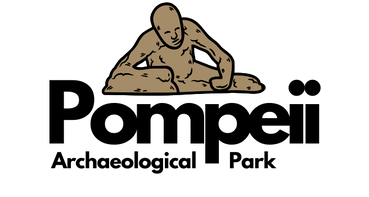Hercules Frescoes in Herculaneum: Heroic Myth on Painted Walls
Table of Contents
Where Myth Met the Wall
When Vesuvius erupted in 79 AD, it buried Herculaneum in an instant. But along with the tragedy, it preserved something remarkable: walls that still spoke in color. Among them were the Hercules frescoes in Herculaneum, images of a hero who was as much a civic protector as he was a mythical figure.
Think of it. You walk into a room and Hercules is right there — not in marble, not in words, but in paint that once glowed with red, gold, and deep blue. These frescoes weren’t background art. They shaped how citizens saw their gods, their city, even themselves.
The College of the Augustales

The most famous site is the College of the Augustales. It was a hall for rituals tied to the imperial cult, but Hercules stole the stage. On one wall: Hercules battling Achelous, a river god in bull form, the fight fierce and brutal. On the opposite wall: Hercules ascending to Olympus, finally welcomed among the gods.
Two walls, two stories. Struggle and triumph. Chaos and order. Mortality and divinity. Placed together, they turned the hall into something like a theater of myth. Every ceremony held here played out under the gaze of the hero, a reminder of strength and reward.
Hercules and Telephus
But that wasn’t the only story. In another grand building — probably a basilica — a third fresco was found. It shows Hercules discovering the infant Telephus, a child left in the wilderness and guarded by a deer.
Here Hercules is different. Not the fighter, not the god in glory, but a fatherly figure. He becomes a rescuer, a civilizer, someone who protects the vulnerable. The contrast mattered. Citizens didn’t just see a conqueror. They saw a hero who could guide, nurture, and heal.
Why These Frescoes Mattered

Roman frescoes were never just decoration. They were messages, painted in bold color. The Hercules frescoes in Herculaneum carried several at once.
They reinforced his role in local religion. They tied Herculaneum to Rome’s imperial story, since the Augustales stood for both empire and piety. They reminded citizens of shared myths that connected Campania with the wider Roman world.
And most of all, they impressed. Imagine walking into that hall — surrounded by scenes of Hercules wrestling chaos and rising to Olympus. The walls themselves told you where you belonged: under order, under strength, under the protection of gods and empire alike.
Style and Meaning
These frescoes were painted in the so-called Fourth Style of Roman wall painting. Bold contrasts, illusionistic frames, myth at the center. A fashion popular across the empire.
Yet the choice of subject feels local. Herculaneum was smaller than Pompeii, more contained, and perhaps more deliberate in what it displayed. Choosing Hercules again and again was no accident. He was the bridge — between Greek and Roman, between civic identity and imperial ideology.
What Survives Today

Many of these frescoes were damaged or lost, but not all. Fragments survive in the National Archaeological Museum of Naples. At the College of the Augustales, the building itself still stands, with faint traces of painted myth clinging to the walls.
Stand there today and close your eyes for a moment. The colors may have faded, but the stories remain. You can still sense how those rooms once glowed, how citizens gathered inside, how Hercules seemed to step out of the wall itself.
Hercules Remembered
The Hercules frescoes in Herculaneum remind us that myth lived in more than words. It lived in painted walls, in the spaces where people met, prayed, and celebrated. These images carried meaning: strength, compassion, victory.
Even in ruin, they still whisper the same message. Hercules was here. He fought, he guided, he triumphed — and Herculaneum carried his story on its walls for all to see.
